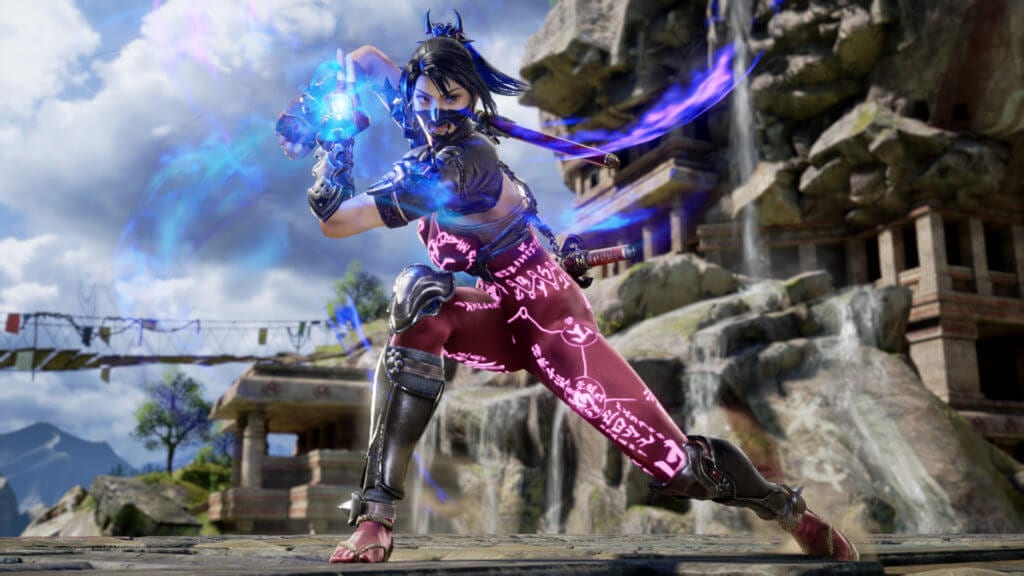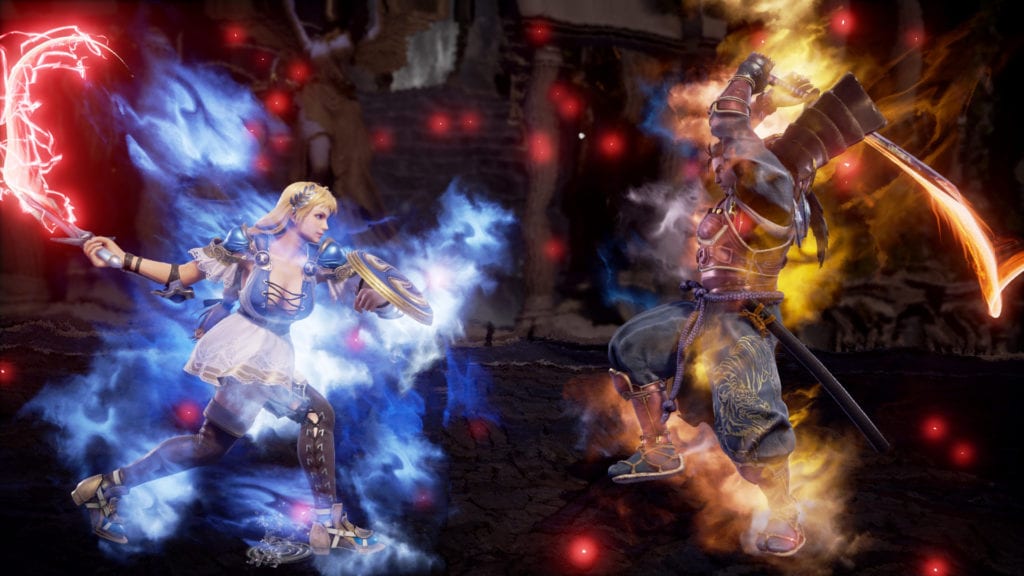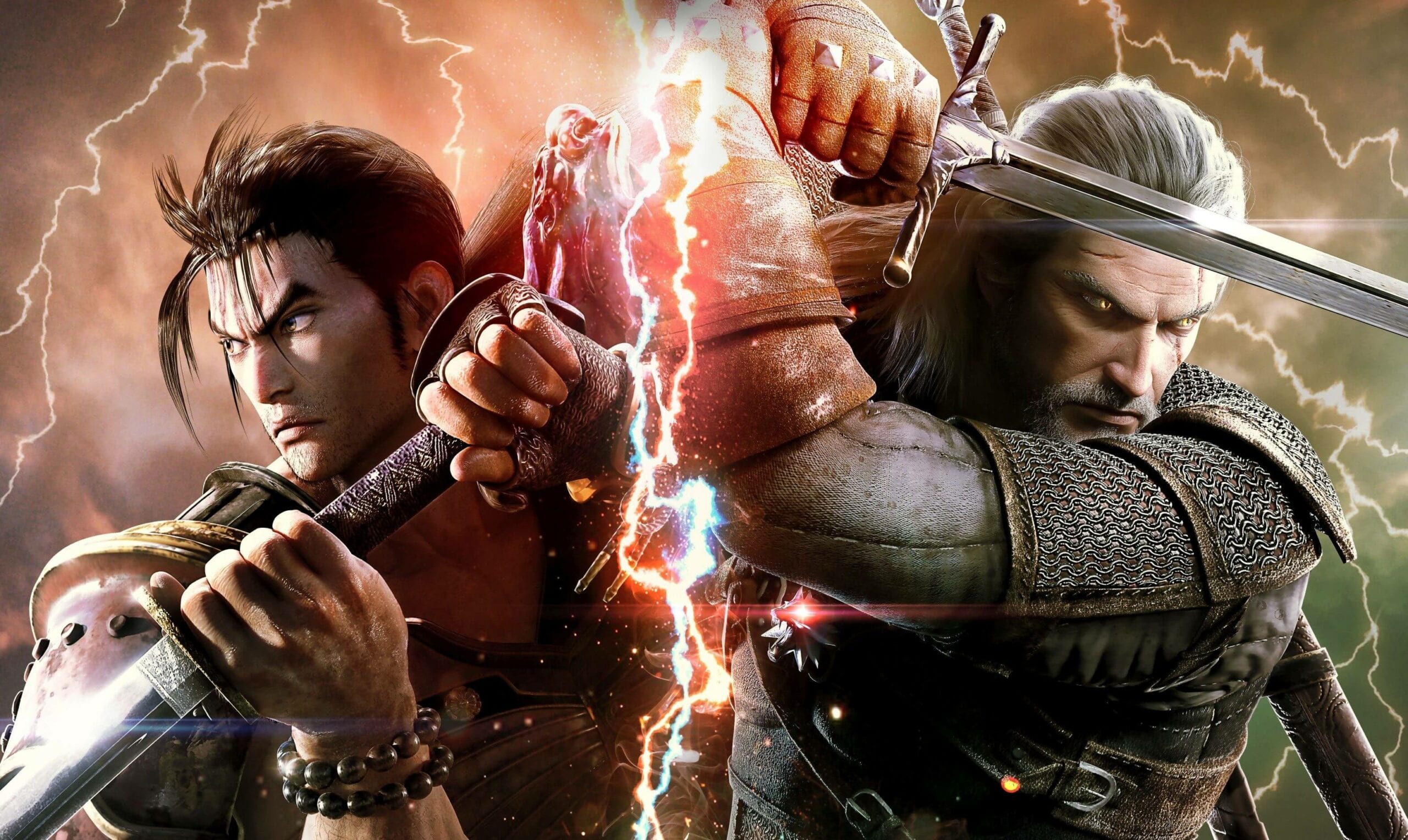REVIEW: Soul Calibur VI (2018)
“Transcending history, and the world, a tale of souls and swords eternally retold.” The 3D, weapon-based fighter has been a prominent member of the one-on-one fighting genre since its debut as Soul Edge in 1995, with six main entries and several ports and spin-offs. As a whole, the series is well-regarded for its smooth animations and fighting mechanics. Its weapon-based system also sets it apart from nearly all other fighting games out there (and there’s certainly no shortage of them). Soul Calibur, as with any franchise that runs long enough, has had its fair share of ups and downs, with the series’ last few entries, Soul Calibur III, IV and V, being widely divisive among its players. Soul Calibur III, while boasting a deep and strategic single-player mode, as well as a comprehensive character creation suite, is arguably the weakest where the actual brass tax of the fighting mechanics are concerned; while mostly balanced, that’s just to say that the majority of the characters were equally terrible. Soul Calibur IV possessed a challenging Tower of Lost Souls mode and was mechanically sound as well as easily accessible to new players, but it suffered from a heavy lack of balance, with multiple characters standing out against the rest of the game’s roster as “broken.” The awkward presence of the Star Wars universe characters Darth Vader, Yoda, and the Apprentice from Star Wars: The Force Unleashed further perplexed long-time players. 2012’s Soul Calibur V for the PlayStation 3 and Xbox 360 was another example of a mechanically sound entry that was mostly well-received by critics, however many series veterans had a number of contentions with the game, including its afterthought of a story mode (something which had been a series strength for its tenure up until that point) and the perplexing absence of series mainstay characters, with them being replaced by inferior descendants or pupils.

Soul Calibur VI seeks to rectify the mistakes of the aforementioned entries – and the franchise as a whole – and as a series veteran since the original arcade release myself, I can confidently say that it mostly succeeds in this regard. Soul Calibur has long been one of the fighting games out there that actually possessed a strong and compelling narrative (as much as one can get from a fighter, anyway), but the developers had let the story get away from them a bit. The long and short of the story is that there’s a malevolent, sentient blade known as Soul Edge which is seen as the most powerful weapon in the world. Through the centuries, many have sought out Soul Edge in the hopes of using it to conquer their enemies, save their people, or to spread death and destruction. The latter of these is what actually happens when someone obtains the evil blade, as they soon become possessed by its malevolent power and begin a frenzied killing spree. However, just as Soul Edge plants its Evil Seed in the hearts and minds of those it seeks to control, there have always been those who were called to combat against those touched by Soul Edge’s evil. Soul Calibur VI serves as a reboot for the franchise, turning back the clock to the events of Soul Calibur and delving deeper into what transpired across the world during its 16th Century time period. This placement makes Soul Calibur VI a great entry for newcomers from a narrative perspective, and a refreshing return to the familiar for veterans as well.
Soul Calibur VI, much to the elation of fans, marks the return of series mainstay characters that were frustratingly absent from the last entry. Fans will rejoice at the long-awaited return of Kilik, Seong Mi-Na, Xianghua, Taki, and Talim, as well as my personal favorite, Sophitia, to the game’s roster of 21 core playable characters, and with a day one unlock of the ring-blade-wielding Tira for season pass holders and three more on the way, there’s something for everyone. Characters retain much of their old move sets, but with some alterations to how some techniques and combos are executed. Some moves which were unbalancing for the series are also absent, adding to the game’s solid balance, and despite inevitable character tiers that will come about from competitive players, the game really is balanced well enough to where, with enough time and practice put into a given character, anyone can find success no matter who they prefer to play as. Many characters, such as Kilik, Mitsurugi, Seigfried, and more are newcomer friendly. Fighting game genre fans have been critical of the franchise in the past for “moving in slow motion” in reference to its measurably slower pace when compared to that of other fighters such as Tekken, Mortal Kombat, Injustice, and others. In response, Project Soul has shifted the game into a new gear. Soul Calibur has long been a franchise that was, for the most part, accessible to new players on its surface level, while possessing Mariana Trench-level depth for those who wish to play at a truly competitive level. Most mechanics from prior entries return in Soul Calibur VI, including the Critical Edge special moves that allow you to burn some of your Soul Gauge in order to perform a devastating, potential finisher or comeback technique. Many of these Critical Edge moves are flashy and a ton of fun to watch. A new mechanic to be added is the Reversal Edge system, in which, by pressing R1 (PS4) or RB (XB1), you go into a slow-mo sequence that gives either player an opportunity to gain an advantage over the other via a horizontal, vertical, kick, or special attack. I’m neutral to the new mechanic for the most part, at least at this point, and will have to see its effect on play over a longer period of time at a higher level to make a final judgment on it.

Character Creation from the last three games makes its return in Soul Calibur VI; however, it is here where the game suffers from its first gaffe: there are precious few equipment options when compared with its predecessors – a disconcerting amount in fact. Despite this, the creation mode is dangerous, and I found myself lost in the rabbit hole that is customization and tweaking things down to the tone and pitch of your character’s voice. That said, as someone who spent numerous hours in the creation mode in the last few entries, I do hope that the forthcoming season pass DLC brings with it a treasure trove of armor options, including many of those that were in Soul Calibur IV and V. Classic franchise modes make their return in Soul Calibur VI as well, including the Arcade Mode and Story Mode – in which you follow Kilik and those with whom he travels, Maxi and Xianghua, on their quest to track down Nightmare and destroy Soul Edge. Upon completion of the main story, you then have additional side story missions to play through for each character in the game, chronicling what that individual was involved in during the narrative. The newest mode to the game is the Libra of Souls mode, a side story mode in which you create your own custom character and play through a lengthy campaign, leveling up your character and weapon style along the way. The mode is enjoyable enough, although Soul Calibur II and III each had better custom modes. The most frustrating part is that you are unable to import the characters you’ve already created in the creation mode, and furthermore, you can’t use the one you make in any other modes either. This, while it might seem petty, is unnecessary extra work.
Online play in Soul Calibur VI can be done in either ranked or casual matches, and from the 50 or so matches that I put in, servers are fairly steady, or at least more so than most fighters. This might be due, in part, to the slight reduction in graphical detail where textures are concerned during online play. That said, Bandai-Namco still, in 2018, does not know how to make online lobbies. How on earth does it make sense that, if the host player leaves the lobby, either by choice or by a dropped connection from their HughesNet, that the game boots every player that resided within it? Short answer: it doesn’t make sense at all and is something in need of an immediate fix so that the host is dropped to the player with the next strongest connection (or anyone, really). Additionally, it would be convenient if any player within a private lobby had the ability to invite additional players from their friends list so that invitations can be sent while the host of the lobby is in a match. The lack of this ability is a minor inconvenience at most, but still an unnecessary and avoidable one; again, Bandai-Namco still hasn’t figured out online play in 2018. Soul Calibur has long had some of my favorite soundtracks in gaming, certainly top of its genre at the very least, and the latest entry does not disappoint, with its gorgeously orchestrated stage tracks and themes. Guest fighter Geralt of Rivia from Witcher fame has his own stage and theme music as well that fits right in with the world. Online lobby shortcomings aside, Soul Calibur VI is a solid entry for the franchise that brings back much of what makes the series great while attempting to liven things up a bit with a few new toys thrown into the mix. The end result is a game that surpasses its last few predecessors and reminds me why I was looking forward to it in the first place.
Soul Calibur VI
Gameplay - 9
Difficulty/Length - 9.5
Story - 8
Graphics - 8.5
Sound Design - 8.5
8.7
Great
Seeking to reboot the storied fighting franchise by returning much of the core game to its roots, while providing a experience enjoyable at the surface level for new players and great depth for vets, Soul Calibur VI is the return to form that the series needed.






